- Submissions

Full Text
Cohesive Journal of Microbiology & Infectious Disease
Detection of Antimicrobial Activity of Fenugreek (Trigonella foenum graecum) Extract on Bacteria Isolation from Different Clinical Specimens in Shendi Town, Sudan
Hala Khalid Mohammed Alfadul¹, Mazin Babiker Musa Bashir¹, Alhaj Saad Mohamed Ahmed Ali², Ghanem Mohammed Mahjaf¹*
1Department of Medical Microbiology, Shendi University, Sudan
2Department of Public Health, Shendi University, Sudan
*Corresponding author: Ghanem Mohammed Mahjaf, Department of Medical Microbiology, Faculty of Medical Laboratory Sciences, Shendi University, Shendi, Sudan
Submission: December 10, 2024;Published: February 14, 2025
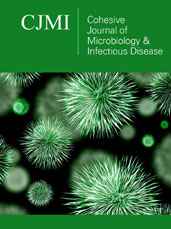
ISSN 2578-0190 Volume7 issues3
Abstract
Background: The growing threat of bacterial resistance has spurred the exploration of herbal medicine
as an alternative solution. Fenugreek seed, a remedy with a rich history spanning many decades, has
effectively treated bacterial infections. The key to unlocking the potential of these traditional remedies
lies in research into the bioactive substances found in plants. This research has revealed numerous
therapeutic properties and validated their traditional applications, providing reassurance about the
credibility of herbal medicine. Trigonella foenum-graecum L., one of the oldest medicinal herbs, is
believed to be native to Asia or the Mediterranean region.
Objectives: This work aimed to determine the antimicrobial activity of Fenugreek (Trigonella foenum
graecum) Extract on Bacteria Isolation from Different Clinical Specimen.
Methodology: It is a prospective cross-sectional study performed in Shendi City, Sudan, from December
2022 to January 2024, at the Microbiology lab, Faculty of Medical Laboratory Science. In this study,50
samples were collected from microbiology labs in Shendi City and identified using gram stain and
biochemical tests. The susceptibility of gram-positive and gram-negative bacteria to the fenugreek was
determined. We tested the fenugreek extract using the agar well diffusion method at 100%, 50%, and
25% w/v concentrations.
Result: Out of 50 clinical specimens, we identified 13 males and 37 females. Among the different clinical
samples tested were thirty-five urine samples, ten wound swabs, two ear swabs, one blood, one sputum,
and one aspirate. The clinical isolates were tested as follows: Escherichia coli 30%, Staphylococcus aureus
26%, Pseudomonas aeruginosa 14%, Serratia marcescens 10%, Providentia 6%, Citrobacter 4%, Proteus
mirabilis 4%, Proteus vulgaris 2%, Klebsiella pneumoniae 2%, and Saprophytic 2%. Notably, all organisms
showed 100% resistance to fenugreek. These results highlight the pressing need for further research
using advanced extraction techniques.
Keywords:Antimicrobial; Fenugreek; Extract; Herbal medicine
Introduction
Multiple drug resistance has increased due to the random use of available antimicrobial drugs to treat infectious diseases. Bacteria are more common on normal skin than other microorganisms [1,2]. The fenugreek plant (Trigonella foenum graecum) is known worldwide for its medicinal value. Besides lowering blood pressure, it possesses anti-inflammatory, antihelminthic, antipyretic [3] and antibacterial properties. Fenugreek also contains lecithin and choline, which have been observed to help dissolve cholesterol and fatty substance minerals, B. Complex, iron, Phosphates, and PAB. The plant can be used as a Para-Amino Benzoic Acid), and vitam) appetite stimulant due to containing neurin. The antimicrobial activities of plant extracts may reside in a variety of different components [4]. Fenugreek (Trigonella foenum-graecum) belongs to the Fabaceae family and has been an essential spice since ancient times [5]. The bacteria are divided into organisms that are Gram-stained and those that are not. The readily stained organisms fall into four categories: gram-positive cocci, gramnegative cocci, gram-positive rods, and gram-negative rods [6,7]. Trigonella feonum-graecum, commonly known as Fenugreek in England, Japan koroha, India Methi, and China Kudu, fenugreek, goes to the family of Fabaceae [8]. an annual plant, fenugreek height is 20-60cm. The leaves and seeds mature in long pods and are used to prepare extracts or powders for medicinal use [9,10]. Fenugreek has many nutrients and bioactive compounds required to improve biological systems’ health and functionality. The fenugreek seeds have 58% carbohydrates, 23- 26% proteins, 0.9% fats, and 25% fiber. Similarly, fenugreek is a rich source of critical amino acids such as aspartic, glutamic, leucine, tyrosine, and phenylalanine [2]. Trigonella feonum-graecum is one of the oldest medicinal plants recognized in recorded history [11]. The potential uses of in vitro propagated plants as sources for new drugs still need to be explored. Based on several investigative studies, a compound produced in an in vivo plant could be produced at the same or different levels or not in an in vitro grown plant [12]. Fenugreek seeds have hypoglycemic and hypo cholesterolemic outcomes, advance marginal glucose consumption, contribute to enhancement in glucose acceptance, and apply hypoglycemic influence by a substitute at the insulin receptor level as well as at the gastrointestinal level [13]; the seeds are also used in the treatment of stomach ulcer, enteritis, urinary tract infection [14], fenugreek seeds and sprouts were found to be operative against a change of gram-negative such as Escherichia coli and gram-positive such as Staphylococcus aureus [15].
Materials and Methods
Study design
This was a prospective cross-sectional study.
Samples collection
Several 50 Samples.
Bacteria isolation and identification
The isolated organisms were fully identified by gram stain and the appropriate followed by performing biochemical tests. After identifying isolates, pure culture was inoculated with organisms incubated for 24 hours and preserved in the refrigerator at 4C.
Preparation of serial dilution of fenugreek for testing the antimicrobial activity
TFG was diluted into different concentrations, 100%, 50%, and 25%, to be used against the selected organisms.
Testing of TFG for antimicrobial activity against standard organisms and the clinical isolates
Twenty grams of powdered plant material will soak separately in 100ml distilled methanol for 48 hours. At intervals of 24 hours, the mixture will be stirred using a sterile glass rod. The extract will be passed through Whatman No 1 filter paper at the end of the extraction process. The resulting filtrate reduces dryness by removing the solvent in an air-dried oven at 40c, then dissolved in 2ml of distilled water and stored in Eppendorf tubes at -18c [16]. The crude extracts were screened against several selected pathogenic bacteria by agar well diffusion. In this method, 10 aliquots of nutrient broth were inoculated with the test organism and incubated at 37 °C for 24 hours. Sterile cotton swabs were dipped in the bacterial suspension and evenly streaked over the entire surface of the agar plate to obtain uniform inoculums. Four wells per plate were made with the reverse side of a sterilized micropipette, emphasizing the importance of sterile techniques. Three for TFG and one for gentamicin [16].
Data analysis
Data were entered, checked, and analyzed using Microsoft Excel 2010 and the SPSS (Statistical Package of Social Science) software version 28.0. Proportional data were presented as frequencies and percentages.
Results
Fifty samples from different clinical specimens were collected from a different laboratory in Shendi town and processed from March to December 2023. among the studied population of fifty patients, there were 13(26%) males and 37(74%) females (Table1). Among the clinical samples tested were 35 urine samples, 10 wound swabs,2ear swabs, 1 blood, 1 sputum, and one aspirate (Table 2). clinical isolates were tested as follows; 15(30%) Escherichia coli 13(26%), Staphylococcus aureus 7(14%), Pseudomonas aeruginosa 5(10%), Serratia marcescens 3(6%), Providentia 2(4%), Citrobacter 2(4%), Proteus mirabilis 1(2%), Proteus vulgaris 1(2%), Klebsiella pneumoniae and 1(2%) Saprophitic (Table 3). They were 100% bacteria-resistant (Table 4).
Table 1:The distribution of clinical specimens according to gender.

Table 2:The distribution of clinical specimens according to the sample Type.

Table 3:The frequency and percentage of isolated organisms.

Table 4:The sensitivity of microorganisms to Trigonella foenum graecum at different concentration.

Discussion
The Fabaceae family includes the essential forage and spice legume herb known as fenugreek (Trigonella foenum-graecum L.). Since ancient times, Ayurvedic, Chinese, and Tibetan medicine have utilized it to treat illnesses and ailments because of its rich nutraceutical and pharmacological qualities. Most regions of the world currently grow it as a crop, emphasizing separating its valuable secondary metabolites rather than using it as a food plant [17]. Antimicrobial resistance is the most significant problem in the world, and it results from misused antimicrobial agents. The emergence of resistant strains of pathogenic bacteria to the most effective antibiotic made us shift to herbal medicine, which can contribute to resolving this problem. In this study, we attempted to assess the antimicrobial activity of TFG in different concentrations against gram-negative and positive bacteria isolated from clinical specimens. The antibacterial activity was tested using the well diffusion assay, and the TFG samples were tested at 100%, 50%, and 25% (v/v) concentrations. TFG shows no activity against grampositive and harmful bacteria. It was also in line with the findings of the Hatil study, which found different extracts of Trigonella foenum-greacum. Seeds showed no activity against all Grampositive Grampositive and Gram-negative bacteria [18]. This study investigated the antibacterial and aqueous, ethanolic, and methanolic extracts of fenugreek seed in in-vitro. These extracts did not reveal any inhibitory effect on the bacteria; this study contrasts with a study done by Norziah et al. [19] done on ethanolic and methanolic extracts of fenugreek seed, which showed an inhibition zone of E. coli [19]. Amir found no effect of TFG by different concentrations on gram-positive bacteria and some gram-negative; also, in my study, there is no effect [20]. My study disagrees with the Mawahib study, which shows that the petroleum ether extract of T. foenumgraecum seeds showed the highest antimicrobial activity [21]. The use of herbal therapies to treat metabolic diseases, including Type 2 Diabetes and obesity, is growing in favor. Fenugreek seeds (Trigonella foenum-graecum), used to treat Type 2 diabetes and excessive cholesterol, are one possible therapeutic alternative [22].
Conclusion
In this study, aqueous, ethanolic and methanolic fenugreek seed extracts showed no antimicrobial properties against grampositive and gram-negative bacteria. We need more research using advanced extraction techniques.
Recommendations
A. More efforts should be directed toward herbal medicine, and
further research should be conducted in this field.
B. Further research to evaluate the active components responsible
for the antimicrobial activity of TFG.
C. Determination of the Minimum Inhibitory Concentration
(MIC) and Minimum Bactericidal Concentration (MBC) of TFG
using the tube dilution method.
Consent
The patient’s written consent has been collected.
Ethical Approval
The study was approved by the Department of Medical Microbiology in Medical Laboratory Sciences at Shendi University and matched to the ethical review committee board. Sample collection was done after signing a written agreement with the participants. Permission for this study was obtained from the local authorities in the area. This study’s aims and benefits were explained with the assurance of confidentiality. All protocols in this study were done according to the Declaration of Helsinki (1964).
Acknowledgment
Firstly, praise Allah for giving us the strength to complete this study. Thanks to all the staff of Medical Laboratories Sciences, Department of Medical Microbiology at Shendi University, Shendi- Sudan, for helping complete it.
Sources of Funding
No specific grant was awarded for this research from any funding organization in the public, private, or nonprofit sectors.
Conflict of Interest
The authors have declared that no competing interests exist.
References
- Lister PD, Wolter DJ, Hanson ND (2009) Antibacterial-resistant Pseudomonas aeruginosa: Clinical impact and complex chromosomally encoded resistance mechanisms regulation. Clinical Microbiology Reviews 22(4): 582-610.
- Dhar AD (2018) Overview of Bacterial Skin Infections. Merck Manual.
- Ahmadiani A, Javan M, Semnanian S, Barat E, Kamalinejad M (2001) Anti-inflammatory and antipyretic effects of Trigonella foenum-graecum leaves extract in the rat. Journal of Ethnopharmacology 75(2-3): 283-6.
- Lai PK, Roy J (2004) Antimicrobial and chemopreventive properties of herbs and spices. Current Medicinal Chemistry 11(11): 1451-60.
- Aasim M, Baloch FS, Nadeem MA, Bakhsh A, Sameeullah M, et al. (2018) Fenugreek (Trigonella foenum-graecum L.): an underutilized edible plant of the modern world. Global Perspectives on Underutilized Crops, pp. 381-408.
- Levinson WE (2018) Review of medical microbiology and immunology. McGraw-Hill Education, USA.
- Cheesbrough M (2006) District laboratory practice in tropical countries, part 2. Cambridge University Press, pp. 1-212.
- Ak O, Batirel A, Ozer S, Čolakoğlu S (2011) Nosocomial infections and risk factors in the intensive care unit of a teaching and research hospital: A prospecive cohort study. Medical Science Monitor 17(5): PH29-34.
- Ng LS, Tan TY, San Yeow SC (2010) A cost-effective method for the presumptive identification of enterobacteriaceae for diagnostic microbiology laboratories. Pathology 42(3): 280-283.
- Perry JD (2017) A decade of chromogenic culture media development for clinical microbiology in an era of molecular diagnostics. Clinical Microbiology Reviews 30(2): 449-479.
- Alwan AM, Jassim IM, Jasim GM (2017) Study of antibacterial activities of seeds extract of fenugreek (Trigonella foenum-graecum). Diyala Journal of Medicine 13(1): 63-67.
- Syed QA, Rashid Z, Ahmad MH, Shukat R, Ishaq A, et al. (2020) Nutritional and therapeutic properties of fenugreek (Trigonella foenum-graecum): a review. International Journal of Food Properties 23(1): 1777-1791.
- Barnes J, Anderson LA, Phillipson JD (2003) Herbal medicines: A Guide for Healthcare Professionals.
- Alwan AM, Jassim IM, Jasim GM (2017) Study of antibacterial activities of seeds extract of fenugreek (Trigonella foenum-graecum). Diyala Journal of Medicine 13(1): 63-67.
- Thomas JE, Basu SK, Acharya SN (2006) Identification of Trigonella accessions which lack antimicrobial activity and are suitable for forage development. Canadian Journal of Plant Science 86(3): 727-732.
- Alwhibi MS, Soliman DA (2014) Evaluating the antibacterial activity of fenugreek (Trigonella foenum-graecum) seed extract against a selection of different pathogenic bacteria. Journal of Pure and Applied Microbiology 8(2): 817-821.
- Dharajiya DA, Jasani HI, Khatrani TA, Kapuria MA, Pachchigar KA, et al. (2016) Evaluation of antibacterial and antifungal activity of fenugreek (Trigonella foenum-graecum) extracts. Int J Pharm Pharm Sci 8(4): 212-217.
- El-Kamali HH, EL-Karim EM (2009) Evaluation of antibacterial activity of some medicinal plants used in Sudanese traditional medicine for treatment of wound infections. Academic Journal of Plant Sciences 2(4): 246-251.
- Norziah MH, Fezea FA, Bhat R, Ahmad M (2015) Effect of extraction solvents on antioxidant and antimicrobial properties of fenugreek seeds (Trigonella foenum-graecum). International Food Research Journal 22(3): 1261-1271.
- Babaei HA, Motamedifar M, Khalifat S, Mohammadi A, Khosrow Z (2018) In vitro study of antibacterial property and cytotoxic effects of aqueous, ethanolic, methanolic, and hydroalcoholic extracts of fenugreek seed. Pakistan Journal of Medical and Health Sciences 12(2): 906-910.
- ElNour ME, Ali AM, Saeed BE (2015) Antimicrobial activities and phytochemical screening of callus and seeds extracts of fenugreek (Trigonella foenum-graecum). International Journal of Current Microbiology and Applied Sciences 4(2): 147-157.
- Jones KA, Richard AJ, Salbaum JM, Newman S, Carmouche R, et al. (2022) Cross-Omics Analysis of Fenugreek Supplementation Reveals Beneficial Effects Are Caused by Gut Microbiome Changes Not Mammalian Host Physiology. Int J Mol Sci 23(7): 3654.
© 2025, Ghanem Mohammed Mahjaf. This is an open access article distributed under the terms of the Creative Commons Attribution License , which permits unrestricted use, distribution, and build upon your work non-commercially.
 a Creative Commons Attribution 4.0 International License. Based on a work at www.crimsonpublishers.com.
Best viewed in
a Creative Commons Attribution 4.0 International License. Based on a work at www.crimsonpublishers.com.
Best viewed in 







.jpg)






























 Editorial Board Registrations
Editorial Board Registrations Submit your Article
Submit your Article Refer a Friend
Refer a Friend Advertise With Us
Advertise With Us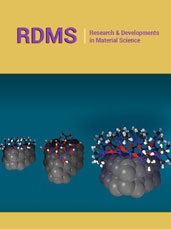
.jpg)
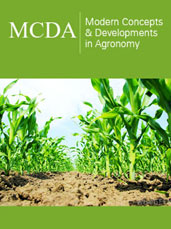
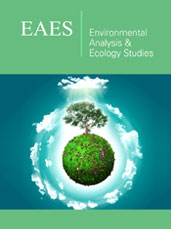



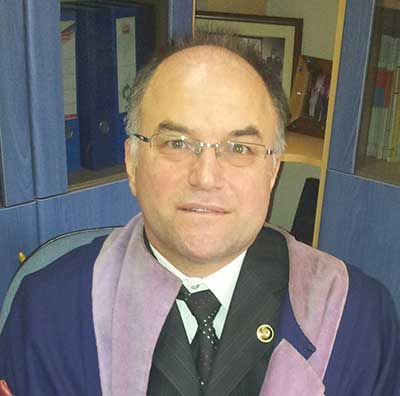
.jpg)














.bmp)
.jpg)
.png)
.jpg)










.jpg)






.png)

.png)



.png)






